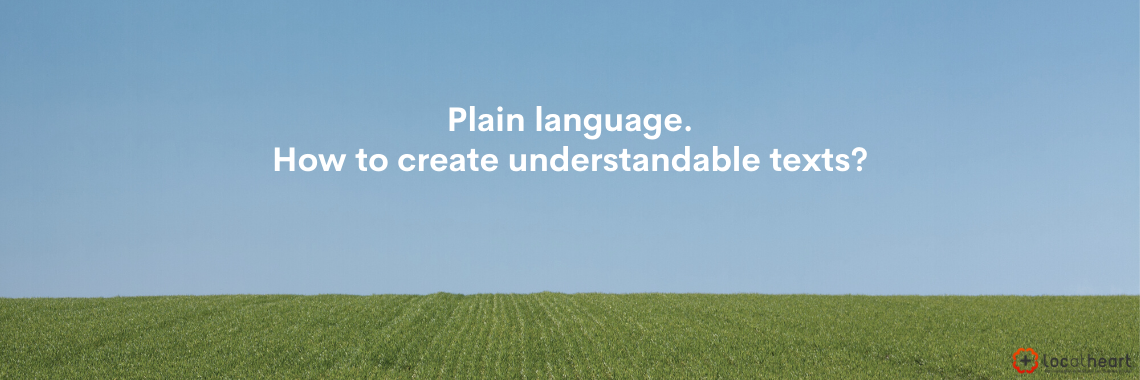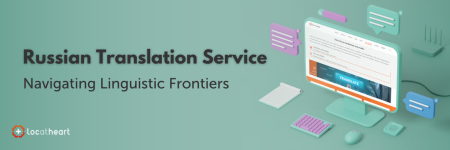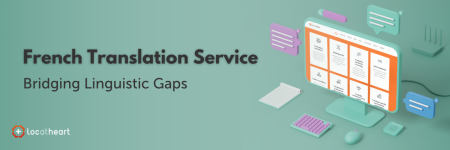Plain language. How to write understandable texts?
How do we, readers and online users, understand the concept of plain language? Is sticking to its main principles enough to create a text that is comprehensive for everyone? If yes – what’s hiding behind the expression “plain English”? If not – what other factors affect our text comprehension?
What is plain language?
Plain language is a medium of communication which enables readers to understand and process given content quickly, easy and completely. It is mainly expected from social institutions, as well as companies and organisations that serve the public interest.
Basic grammar rules - plain grammar
In order to communicate in a clear and unambiguous way, remember to follow a couple of rules.
Plain language good practices:
- Readable text structure (discussed further below).
- Short sentences (15–20 words).
- Natural language (or ordinary language) – meaning a language that has evolved naturally and is used for interpersonal communication, as opposed to artificial or programming languages.
- Addressing the reader – use pronouns to escape stuffy writing and calls to action (e.g., “remember to…” or “check out…”) to engage the reader.
- Sticking to the main topic.
- Using dynamic verbs which describe an action, process or change (“read,” “work,” “cook”).
- Keeping the subject and verb close together.
- Avoiding redundant words.
Bad practices:
- Passive voice.
- Ambiguous words (for instance, using “shall” instead of “must”).
- Using more than two or three subordinate levels.
- Stative verbs which relate to thoughts, emotions and senses (“prefer,” “imagine,” “be,” “think”).
- Using too many filler words, such as “actually,” “totally” or “basically.”
- Official language with complex, uncommon words.
- Being too wordy – use “if” instead of “in the event of” and “to” instead of “as a means of.”
- Nominalisation (forming nouns from verbs) – e.g., “They discussed.” → “They had a discussion.”
Why do we need plain language?
Language is the key to understanding the world and taking an active part in it. Striving for plain English guarantees:
- equal access to information;
- more comfort when filling out forms or reading legal documents;
- wider access to public services – citizens may easily apply for grants;
- reducing social exclusion;
- raise of awareness among citizens who, thanks to plain language, may easily control the efforts of the authorities.
Plain language doesn’t dumb down the content: why we should opt for natural English
The answer is quite obvious. Our brain doesn’t like taking unnecessary effort. We find it more difficult to absorb complex texts, which is why we tend to be more wary of them. You should keep that in mind if your business relies heavily on top-notch content marketing. If your text is too stuffy or ambiguous, online users won’t be able to understand it and comprehend what products and/or services you provide. You might as well forget about new clients…
It all makes sense, right? Unfortunately, the world of content marketing is still full of intricate descriptions which, by some, are considered a token of professionalism and premium quality. Quite the contrary! Any confused user will promptly leave a website that doesn’t provide concrete details.
At locatheart, we help to create and update texts accessible to everyone. We’re happy to prepare guidelines for authors and copywriters, as well as support the process of text simplification.
How do we read online content?
We approach each text differently, depending on why we visit a given website in the first place. What are some types of reading techniques, then?
- Horizontal reading – in most cultures, it means reading from left to right, focusing on the upper left side. We usually choose this method when we’re not entirely motivated or concentrated.
- Skimming and scanning – looking for precise information.
- Layer cake reading – focusing mainly on subheadings.
- Close reading – thoughtful and critical analysis of a text.
Heat maps: Know your audience
Do you want to enhance the efficiency and performance of your content? Start studying your users’ behaviour. To do so, you may analyse the following aspects:
- click tracking – it measures what users click/tap on when browsing your website, emails or apps.
- scroll tracking – it shows how users engage with your content and how far they scroll down a given page.
- attention tracking – it checks which parts of your website are the most appealing to people.
You may use dedicated tools (such as HotJar) to collect data – they will present it graphically as a heat map. Once you find out what the most eye-catching elements of your website are, you can start organising your content adequately.
Understandable text structure
Simplicity goes beyond using natural language. It also depends on the article layout. For your readers, the form of a text is as important as its layout. What constitutes an understandable text structure?
- Title: it must be catchy but not clickbaity! Remember to fulfil the promise made in the title. Otherwise, visitors will be quick to leave your site and your bounce rate will go up.
- Lead: try to stick to 2–3 sentences. A lead needs to draw attention and inform the reader what awaits them (like a summary).
- Headings: the perfect place in which to include key phrases; they will also guide the reader through your text.
- Paragraphs: keep them short and sweet (and, if necessary, divided into shorter subtopics), opt for lists and bullet points.
- Additional elements: every now and then, our eyes need a break from reading, so make sure that your content contains images (with alternative texts). You make also include clear hyperlinks to create a complete and factual text.
- SEO: never underestimate the power of text optimisation. Prepare an SEO title with a meta description and do keyword research. If you need help with any of these processes, reach out to us.
Conclusion: How to cherish plain language?
Keep it simple. Create understandable and factual content. Go for the most obvious solutions, give up abstract metaphors and longish digressions. Use full stop instead of commas. Opt for common phrases. Take care of the structure and visual aspect of your text. If you happen to have more questions, contact us. At locatheart, we’ve got content creation down to a fine art.
Fun fact: The importance of plain language was acknowledged by Sejong the Great in the 15th century. The Korean king decided to combat illiteracy among the poorest citizens. The issue was caused by Chinese characters which were used back then. This system was extremely complicated, thus acquainted and used only by the elite. Therefore, Sejong the Great ordered the creation a new, artificial alphabet – Hangul (한글). It is now considered one of the most logical alphabets in the world, as the shape of each consonant corresponds to the mouth position during the pronunciation of given words.


![Translating Japanese Anime versus Western Animation for Children [featured image] - translation agency LocAtHeart](https://locatheart.com/wp-content/uploads/2021/11/LAH_blog_naglowek_nowy_rozmair-3-1-450x231.png)


![How audiovisual translators shape our life? [featured image] - translation agency LocAtHeart](https://locatheart.com/wp-content/uploads/2021/11/LAH_blog_naglowek_nowy_rozmair-1-450x231.png)
Leave a Reply